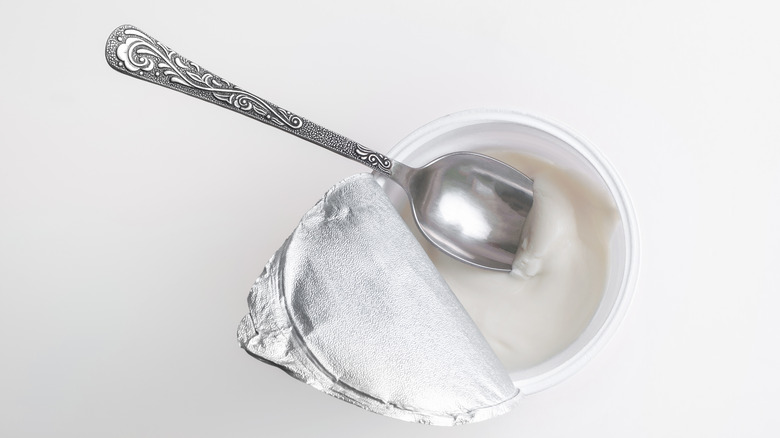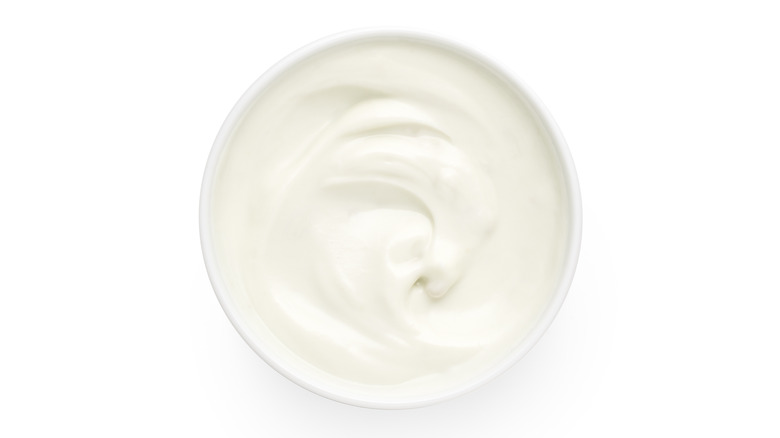The Basic Trick That Will Make Your Sour Cream Last Longer In The Fridge
Do you keep sour cream on hand in your house? A fermented dairy product not dissimilar to yogurt, sour cream is produced when lactic acid bacteria is introduced to cream, according to MasterClass, denaturing whey proteins in the cream and thickening it from a liquid to a denser product. While not everyone loves sour cream, those that do prize it for its richness, its smooth mouthfeel, and the tanginess a dollop can lend to baked potatoes, nachos, borscht, and many other savory dishes. Sour cream is also a quintessential baking ingredient, bringing moistness and tenderness to coffee cakes, pound cakes, cheesecakes, and more.
Sour cream is pretty easy to make at home, notes MasterClass, relying on a room temperature fermentation of a heavy cream and buttermilk mix. Many of us who enjoy sour cream tend to feel disillusioned when, within the span of seven to 10 days of purchasing it, the container goes bad — the sour cream often sporting a fuzzy layer of white, blue, or green mold. If you've been there, and you're looking for an easy way to keep your sour cream fresher longer, we've got just the tip for you.
Turn the container upside down for a longer shelf life
If you're tired of stocking your refrigerator with tangy sour cream only for it to go bad before you have a chance to dollop it over your favorite foods, here's a tip you can try at home: turn the container of sour cream upside down. Sour cream, like other dairy products stored in a tub such as cottage cheese and yogurt, tends to spoil due to the gap between the top of the product and the lid of the container. Because it's filled with air and isn't airtight, bacteria can get in and colonize the sour cream, according to CountryLiving.
As the outlet explains, turning the container upside down creates a vacuum, making the container a place that's much more difficult for bacteria to access. This can extend the shelf life of your delicious sour cream — and cottage cheese, too. Just make sure the container has a tight-fitting lid. You could even place the upside-down container on a rimmed plate to make sure none of the whey drips out and makes a mess of your fridge.

